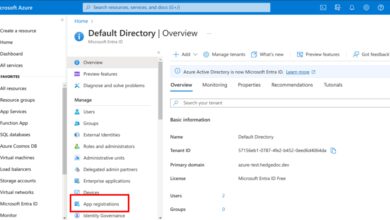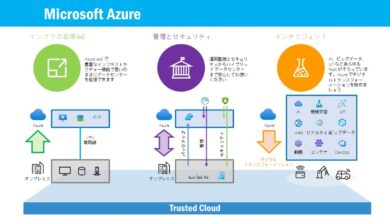Azure Standard: 7 Powerful Insights You Must Know in 2024
Welcome to the ultimate guide on Azure Standard—your go-to resource for understanding Microsoft’s foundational cloud service tier. Whether you’re a developer, IT manager, or business leader, this article breaks down everything you need to know in a clear, engaging way.
What Is Azure Standard and Why It Matters

The term azure standard refers to Microsoft Azure’s baseline tier of cloud computing services, offering a balanced mix of performance, reliability, and cost-efficiency. Unlike premium or enterprise tiers, Azure Standard is designed for businesses that need dependable infrastructure without the high price tag.
Defining Azure Standard in Cloud Computing
Azure Standard isn’t a single product—it’s a category encompassing virtual machines, storage, networking, and platform services that meet specific performance and availability benchmarks. These services are ideal for production workloads that don’t require ultra-low latency or guaranteed 99.99% uptime.
- It includes VMs with standard SSDs and HDDs
- Offers SLA-backed availability (typically 99.5–99.9%)
- Suitable for web apps, dev/test environments, and small databases
For a full breakdown of service tiers, visit the official Azure pricing page.
How Azure Standard Differs from Premium Tiers
The key difference lies in performance, redundancy, and support. While Azure Premium offers ultra-fast SSDs, higher CPU priority, and enhanced SLAs, azure standard services use shared or lower-tier hardware with standard redundancy.
- Premium VMs offer higher IOPS and lower latency
- Standard VMs may experience performance variability during peak loads
- Premium storage includes zone-redundant options; standard typically does not
“Azure Standard is the sweet spot for cost-conscious teams needing reliable cloud infrastructure without over-provisioning.” — Microsoft Cloud Architect, 2023
Core Services Under the Azure Standard Tier
Understanding which services fall under the azure standard umbrella is crucial for planning your cloud architecture. These services form the backbone of most Azure deployments, especially for startups and mid-sized businesses.
Virtual Machines (VMs) in Standard Tier
Azure Standard VMs are among the most widely used resources. They come in various sizes (A, B, D, E series) and are perfect for general-purpose workloads.
- A-series: Entry-level VMs for dev/test and low-traffic apps
- B-series: Burstable VMs that save costs for intermittent workloads
- D-series: General-purpose VMs with SSD storage, ideal for production apps
These VMs are billed per second and can be scaled up or down based on demand. Learn more at Microsoft Learn: Azure Virtual Machines.
Standard Storage Accounts
Standard storage in Azure includes Blob, File, Queue, and Table storage with HDD or standard SSD backing. It’s cost-effective for storing backups, logs, and static content.
- Supports both hot and cool access tiers
- Replication options: LRS, GRS, RA-GRS
- Not suitable for high-frequency transactional data
For archival needs, consider moving older data to Azure Archive Storage to reduce costs.
Networking with Standard Load Balancer and Public IPs
Azure Standard also includes networking components like Standard Load Balancer and Standard Public IP addresses. These offer better performance and features than their Basic counterparts.
- Standard Load Balancer supports availability zones
- Provides outbound SNAT for VMs in a backend pool
- Enables integration with Network Security Groups (NSGs) and Application Security Groups (ASGs)
Unlike Basic tier, Standard networking is zone-aware and integrates seamlessly with Azure Monitor for detailed traffic analytics.
Cost Efficiency of Azure Standard Services
One of the biggest advantages of choosing azure standard is cost savings. For many organizations, it strikes the perfect balance between performance and affordability.
Pay-as-You-Go vs. Reserved Instances
Azure Standard services can be billed under several models:
- Pay-as-you-go: Pay only for what you use, ideal for variable workloads
- Reserved Instances (RIs): Save up to 72% by committing to 1- or 3-year terms
- Spot VMs: Use unused capacity at up to 90% discount (with no SLA)
For predictable workloads, Reserved Instances are a game-changer. You can manage reservations via the Azure Portal or PowerShell.
Cost Optimization Tools and Best Practices
Microsoft provides several tools to monitor and optimize spending on azure standard resources.
- Azure Cost Management + Billing: Track spending by resource, department, or tag
- Azure Advisor: Get personalized recommendations for cost savings
- Right-sizing VMs: Downgrade oversized VMs to match actual usage
“We reduced our monthly Azure bill by 40% just by switching from Premium to Standard VMs where performance wasn’t critical.” — CTO, SaaS Startup
Performance and Reliability of Azure Standard
While azure standard is more affordable, it’s essential to understand its performance characteristics and reliability guarantees.
Service Level Agreements (SLAs) for Standard Services
Microsoft backs most Standard services with strong SLAs:
- Standard VMs: 99.9% availability when deployed in an Availability Set
- Standard Storage: 99.9% availability for LRS, 99.9% for GRS
- Standard Load Balancer: 99.99% availability
These SLAs mean you can run production workloads with confidence. However, if you need 99.995% uptime, consider upgrading to Premium or using multiple regions.
Benchmarking Performance: Real-World Examples
Independent tests show that Standard SSDs deliver 3,000–5,000 IOPS per disk, sufficient for most database workloads. HDD-backed storage offers 500–1,000 IOPS, suitable for file servers or backup targets.
- Web servers on Standard D2s handle 500–1,000 requests per second
- SQL Server on Standard VMs performs well under moderate load
- Latency is typically under 10ms for intra-region traffic
For performance-critical applications, always test with your actual workload using Azure Load Testing tools.
Security and Compliance in Azure Standard
Security is not compromised in the azure standard tier. Microsoft applies the same foundational security controls across all service levels.
Shared Responsibility Model
Under the shared responsibility model:
- Microsoft secures the physical infrastructure, hypervisor, and network fabric
- You are responsible for securing OS, applications, data, and access controls
This means even on Standard VMs, you must patch systems, configure firewalls, and manage identities properly.
Compliance Certifications
Azure Standard services are covered under Microsoft’s broad compliance portfolio, including:
- GDPR
- ISO 27001, 27017, 27018
- HIPAA
- SOC 1, SOC 2
- PCI DSS
You can verify compliance status using the Microsoft Compliance Manager.
Security Tools Available in Standard Tier
Even on Standard resources, you can deploy:
- Azure Firewall (Standard tier)
- Network Security Groups (NSGs)
- DDoS Protection Standard (optional add-on)
- Microsoft Defender for Cloud (free tier available)
Defender for Cloud provides threat detection, vulnerability assessment, and secure score recommendations—even for Standard VMs.
Use Cases and Real-World Applications of Azure Standard
The azure standard tier shines in a variety of real-world scenarios where cost and reliability are balanced.
Small to Medium Business (SMB) Cloud Migration
Many SMBs use Azure Standard to migrate on-premises servers to the cloud without breaking the bank.
- Host file servers, domain controllers, and internal apps
- Run backup and disaster recovery with Azure Site Recovery
- Scale during peak seasons without hardware investments
One manufacturing firm reduced IT costs by 35% after moving to Azure Standard VMs.
Development and Testing Environments
Dev/test environments benefit greatly from azure standard due to their temporary nature and lower performance demands.
- Spin up VMs for CI/CD pipelines
- Use B-series burstable VMs to save costs
- Automate shutdown schedules with Azure Automation
Teams can deploy full environments on-demand and tear them down after testing, minimizing waste.
Web Hosting and Content Delivery
For websites with moderate traffic, Azure Standard provides a robust hosting platform.
- Host WordPress, Drupal, or custom web apps on Standard App Service
- Use Azure CDN (Standard from Microsoft) to cache static assets
- Scale out during traffic spikes with auto-scaling rules
One e-commerce site handled Black Friday traffic by scaling from 2 to 10 Standard VMs automatically.
How to Get Started with Azure Standard
Starting with azure standard is straightforward, even if you’re new to Azure.
Setting Up Your First Standard VM
Follow these steps to deploy your first Standard VM:
- Sign in to the Azure Portal
- Navigate to Virtual Machines > Create
- Choose a Standard series (e.g., D2s v3)
- Select Standard SSD or HDD for OS and data disks
- Configure networking and security groups
- Deploy and connect via RDP or SSH
You can also use Azure CLI or Terraform for infrastructure-as-code deployments.
Best Practices for Managing Standard Resources
To get the most out of azure standard, follow these best practices:
- Tag all resources for cost tracking and governance
- Enable Azure Monitor for performance insights
- Use Azure Backup for automated snapshots
- Review Azure Advisor recommendations weekly
- Set up budget alerts to avoid overspending
Automation is key—use Azure Policy to enforce standards across your environment.
Future Trends and Evolution of Azure Standard
The azure standard tier continues to evolve with Microsoft’s cloud strategy, incorporating new features and performance improvements.
Integration with AI and Machine Learning Services
While AI workloads often require GPU-powered Premium VMs, Standard tiers are being used for data preprocessing, model deployment, and inference APIs.
- Deploy ML models via Azure Machine Learning on Standard VMs
- Use Standard storage for training data lakes
- Integrate with Azure Cognitive Services via API calls
This hybrid approach keeps costs low while leveraging Azure’s AI ecosystem.
Sustainability and Green Computing Initiatives
Microsoft is committed to sustainability, and azure standard plays a role in energy-efficient computing.
- Modern data centers use 100% renewable energy in many regions
- Efficient hardware utilization reduces carbon footprint
- Azure Sustainability Calculator helps estimate environmental impact
Choosing Standard over over-provisioned Premium VMs is itself a green decision.
Edge Computing and Hybrid Scenarios
Azure Standard services are increasingly used in hybrid and edge environments.
- Azure Stack HCI brings Standard-like VMs to on-premises
- Azure Arc enables management of Standard resources across clouds
- IoT Hub Standard tier collects and processes edge device data
This convergence allows businesses to maintain consistency across environments.
What is Azure Standard?
Azure Standard refers to Microsoft’s baseline tier of cloud services, including VMs, storage, and networking, offering a balance of performance, reliability, and cost for general workloads.
Is Azure Standard suitable for production workloads?
Yes, many production applications run successfully on Azure Standard, especially when deployed with availability sets, proper monitoring, and backup strategies.
How much cheaper is Azure Standard compared to Premium?
Standard VMs can be 30–60% less expensive than equivalent Premium VMs, with even greater savings when using Reserved Instances or Spot VMs.
Can I upgrade from Azure Standard to Premium later?
Yes, you can easily upgrade VM size, storage type, or networking tier at any time with minimal downtime.
Does Azure Standard include security features?
Yes, Standard services benefit from Microsoft’s global security infrastructure, and you can enhance protection with NSGs, Azure Firewall, and Microsoft Defender for Cloud.
Choosing the right cloud tier is critical for balancing performance and cost. Azure Standard delivers a powerful, secure, and cost-effective foundation for a wide range of applications—from SMBs to enterprise dev/test environments. By understanding its capabilities, limitations, and best practices, you can make smarter cloud decisions in 2024 and beyond. Whether you’re migrating, scaling, or building new apps, azure standard remains a smart starting point in the Azure ecosystem.
Further Reading:









